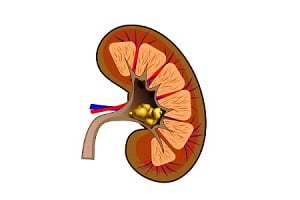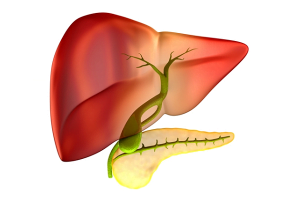Bladder cancer is a kind of cancer in which there is an uncontrolled cell multiplication and growth in the bladder cells. These bladder cells usually have metastatic property. The bladder cancer can be benign or malignant.
Bladder cancer is more usual among males than females.
Risk Factors of Bladder Cancer
The main recognized risk factors of bladder cancer are tobacco smoking, urinary schistosomiasis, and occupational exposure to aromatic amines. Other potential risk factors for the bladder cancer include urinary tract diseases, certain drugs, genetic factors, etc.
Tobacco Smoking
Cigarette smoking is a traditional cause of bladder cancer. The correlation between bladder cancer and cigarette smoking has been a subject of a number of epidemiologic studies, and all of them have showed approximately 2 to 3 times higher risk of the bladder cancer in ever smokers compared to nonsmokers.
The risk of cancer increases with both the number of years of smoking and the number of cigarettes a person smokes.
The carcinogen agents of cigarette include chemicals like aromatic amines, N-nitroso compounds, polycyclic aromatic hydrocarbons (PAH) and reactive oxygen species (O2, OH, O2, H2O2, HOCl).
A meta-analysis study has shown that bladder cancer patients (73% of all participants were men and 77% were Europeans) reported an attributable risk percent for smoking of 48%. A dose-response relationship was observed between the number of cigarettes that the person smoked per day and bladder cancer cases up to a level of 15-20 cigarettes per day in both males and females.
Cigar, pipe and environmental smoking have also been recognized as risk factors for the bladder cancer.
Occupation
- Occupations that have been related with an increased risk of bladder cancer involves rubber manufacturing, leather industry, metal industry, textile industry and truck driving.
- An excess risk of bladder cancer have been noticed in some occupations where exposure to PAH (workers employed in the aluminum industry, coal gasification and iron and steel foundry workers) is common.
- Occupational exposures include dyestuffs (aromatic amines), combustion products (4-nitrobiphenyl, 4-aminobiphenyl); lubricating oils, rubber and welding materials.
Drinking Water
Three types of compounds contained in drinking water that are generally involved in the occurrence of bladder cancer are:
- Arsenic
- Chlorine
- Nitrates
Urinary Tract Diseases
Urinary schistosomiasis is a disease which is caused by infection with a worm Schisostosoma. These worms live around the infected person’s bladder and release eggs which are released in the urine of person.
This infection is also a risk factor for bladder cancer. Cystitis (inflammation of the bladder) can also lead to bladder cancer.
Drugs
Drugs such as cyclophaspamide, aspirin, phenacetin, etc have been recognized as risk factors for bladder cancers.
Signs of Bladder Cancer Risk
Patients who experience the following symptoms are at higher risk of the bladder cancer:
The most common symptom is blood in urine (hematuria). Blood in urine may be noticed one day, but not the next. If the patient is having bladder cancer, blood eventually comes back. In some cases, blood is not visible in urine and doctors detect it with urine tests.
When the bladder cancer starts developing, patient experiences these symptoms:
- Unable to pee when there is an urge to pee
- Lowe back pain
- Hunger loss
- Swollen feet
- Feeling of extreme tiredness
FAQs
At What Age Does Bladder Cancer Occur?
Risk factors for developing the bladder cancer do increase with age. Men and women over an age of 70 tend to develop this disease two to three times more often than those aged 55 to 69. People below the age of 40 rarely develop bladder cancer.
Can You See Bladder Cancer on an Ultrasound?
An ultrasound scan gives a picture of organs by using sound waves. It is used to show whether cancer is present and how large it is. An ultrasound can't always find small tumors, so doctors may ask for additional tests. Doctors will usually ask their patients to have a full bladder for the ultrasound.
What are the Different Types of Bladder Cancer?
Bladder cancer is of 3 types: Urothelial carcinoma (transitional cell carcinoma): Cancers start in the urothelial cells which line the inside of the bladder. It accounts for about 90% of all bladder cancers. Squamous cell carcinoma of urinary bladder is a malignant neoplasm which is derived from urothelium with squamous phenotype. Nearly 1% to 2% of bladder cancers are squamous cell carcinomas. Adenocarcinoma: It is a very uncommon malignancy in the urinary bladder which arises primarily in the bladder as well as secondarily from other organs. It has been reported that 1% of bladder cancers are adenocarcinomas.
What Foods Should You Avoid if You Have Bladder Cancer?
Lean proteins (like eggs, meat, seafood and beans) are suggested by the doctors. Eating too much red meat or processed meats should be avoided. Patients should consume some dairy products such as milk, yogurt, and cheese. A small amount of healthier, unsaturated fats, such as oily fish, nuts, seeds, avocado, and certain types of oils (such as olive oil) should be consumed to avoid bladder cancer.






